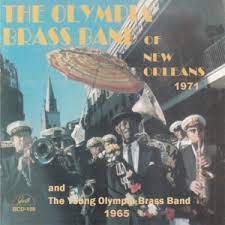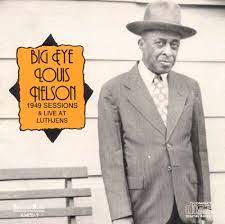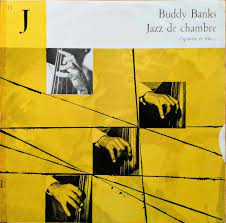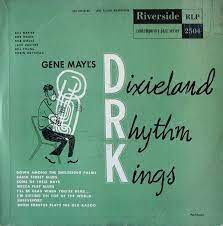
Daily Dose Of Jazz…
Paul Crawford was born on February 16, 1925 in Atmore, Alabama, to parents who were a Baptist minister and a music teacher. After serving in the Navy during World War II he graduated from the Eastman School of Music in Rochester, New York where he studied trombone in a classical style. He went on to study under trombonist and teacher Emory Remington, pursued for a time graduate studies at the University of Alabama. Moving to New Orleans, Louisiana in 1951 he became a specialist in the Dixieland style of Jazz.
Crawford initially took up residence in the French Quarter of New Orleans where he became acquainted with people in the local arts and music scene. He also started performing at the New Orleans Jazz Club and learned to play Dixieland. Soon after he became co-bandleader of the Crawford-Ferguson Night Owls, with Leonard Ferguson, frequently performing on the steamboat President.
He made his first recordings on trombone in 1957 with the Lakefront Loungers. During this time, Paul played the trombone on non-paying gigs, and participated in jam sessions. He performed with Sharkey Bonano and with bandleader Paul “Doc” Evans.
By the 1950s, with Deep South laws prohibiting white musicians from performing with Black musicians, jobs dried up. As these laws were struck down in the 1960s, opportunities opened up for Crawford to perform with various notable Black jazz musicians in New Orleans. In 1964, Crawford was approached by Allan Jaffe, who was the owner of Preservation Hall, about performing at the Preservation Hall venue. With Punch Miller, he became a part of the Preservation Hall Jazz Band.
Shortly thereafter, he became a part of the Olympia Brass Band, marched in many New Orleans Jazz Funerals and often performed with the baritone horn. He was a founding member of the New Orleans Ragtime Orchestra. As a member of this group and others, he helped make the soundtrack for the movies “Pretty Baby” and “Live and Let Die”, as well as many other recording sessions. Crawford played the baritone horn in many performances of the musical “One Mo’ Time”.
Crawford was an associate curator at the Tulane University Hogan Jazz Archive. As curator, conducted numerous interviews for an oral history of jazz, and resurrected many forgotten pieces of jazz music and developed arrangements of them. He also developed a significant number of photos of jazz musicians and performances, in a private collection.
Trombonist, baritone hornist, arranger and music historian Paul Crawford, who specialized in Dixieland jazz, transitioned on July 31, 1996 of lung cancer. He had been living in a New Orleans skilled nursing facility at the time.
More Posts: arranger,bandleader,baritone horn,curator,historian,history,instrumental,jazz,music,trombone

Daily Dose Of Jazz…
Big Eye Louis Nelson was born Louis Nelson Delisle on January 28, 1885 in New Orleans, Louisiana into a family who were Creoles of color. He spent most of his life in his hometown and studied clarinet with the elder Lorenzo Tio.
By the age of 15, Big Eye was working professionally in the music venues of Storyville, an area of brothels and clubs in New Orleans where Black musicians could find work. He developed a style of hot jazz, also known as Dixieland, and was an influence on clarinetists Johnny Dodds and Jimmie Noone.
In 1917, Nelson joined the reconstituted Original Creole Orchestra that included Freddie Keppard and Bill Johnson. Disbanded in Boston in the spring of that year, it was reassembled in New York City later in the fall. After a short while, he was replaced by Jimmie Noone. He was the regular clarinetist with the Jones & Collins Astoria Hot Eight but did not play on their 1929 recording sessions.
He made his only recordings in his later years in the 1940s, by which time he was often in poor health. Dixieland clarinetist Big Eye Louis Nelson, who also played double bass, banjo, and accordion, transitioned on August 20, 1949.
More Posts: accordion,bandleader,banjo,bass,clarinet,history,instrumental,jazz,music

Daily Dose Of Jazz…
Alvin “Buddy” Banks was born on January 15, 1927 in St. Thomas, Ontario, Canada and grew up in the United States. He became interested in music during high school, starting out on piano before switching to saxophone. During World War II he joined the United States Army Band as a bass player.
Making his first appearance on record was in Vienna, Austria with Thurmond Young, this group also played live at the Colored Club. He played in Paris, France with Gerry Wiggins in 1950, and then with Bill Coleman in Bern, Switzerland, Le Havre, France and Belgium. After problems with his passport in Switzerland, he left for Paris in 1953, where he recorded often with expatriate American jazz musicians as well as local performers.
These include Hazel Scott, Buck Clayton, Lionel Hampton, Mezz Mezzrow, Don Byas, Albert Nicholas, and André Persiany. He toured with Michel Attenoux and with Sidney Bechet through Western and Central Europe in 1954.
Double bassist Buddy Banks transitioned on August 7, 2005 in Las Vegas, Nevada.
More Posts: bass,history,instrumental,jazz,music

Daily Dose Of Jazz…
Gene Mayl was born in Dayton, Ohio on December 30, 1928. He lived in France after World War II, where he worked with Claude Bolling, Don Byas, and Claude Luter.
In 1948, he formed his own Dixieland revival ensemble, the Dixieland Rhythm Kings, which recorded for London Records and Riverside Records, and was active through the mid-1970s. Among those he worked with in this group were Speckled Red and Terry Waldo.
Mayl worked extensively with George Brunis in the 1960s and 1970s, and also worked with Wild Bill Davison, Billy Maxted, Bob Scobey, and Muggsy Spanier. Double-bassist, tubaist, and vocalist Gene Mayl transitioned on May 5, 2015 in Harrison Township, Ohio.

Daily Dose Of Jazz…
Merritt Brunies was born on December 25, 1895 into a well-known musical family in New Orleans, Louisiana. Among its members were trombonist George Brunies and cornetist Albert Brunies.
Merritt led his own band, The Original New Orleans Jazz Band, from 1916 to 1918. Though this ensemble never recorded, it existed before both Jimmy Durante’s New Orleans Jazz Band and the Original Dixieland Jazz Band. Following this, he formed another group which played at Friar’s Inn in Chicago, Illinois directly after the stint by the New Orleans Rhythm Kings.
He played regularly in New Orleans in the 1930s, however, by 1946 he moved to Mississippi. There he played with his brothers in a Dixieland jazz band until his retirement. Trombonist and cornetist Merritt Brunies transitioned on February 5, 1973 in Biloxi, Mississippi.
More Posts: bandleader,cornet,history,instrumental,jazz,music,trombone




